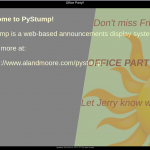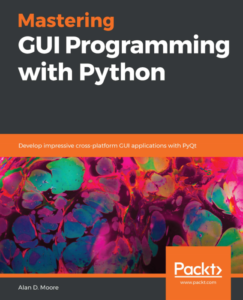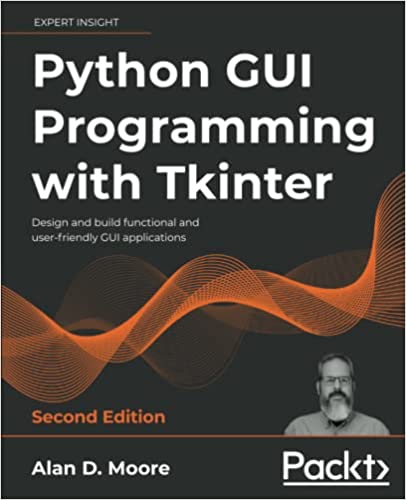This blog has been a tad slow over the last year or so, mostly because I’ve been concentrating more on making music than writing code; but that all changed when I was contacted last month with an opportunity to write a book on Tkinter. So, sometime early next summer, my first book, Python GUI Programming with Tkinter, will be available from Packt Publications.
Wait, Tkinter? In 2018??
Yes, I know what you’re thinking; it’s either “What on earth is Tkinter?” or “Why would you do a book on it in 2018?”
For those asking the first question, Tkinter is a GUI programming library built into the Python standard library; and if that doesn’t mean anything to you, you might not be the target demographic for this book. 🙂
For those asking the second question — well, hear me out.
To start with, this book isn’t just going to be a dry Tkinter how-to; it’s fundamentally a book about writing end-user applications and choosing the right technology to solve real-world problems (particularly in the workplace). I’ll be going through the process of dissecting a business need and building an appropriate software solution.
The simplicity and ready availability of Tkinter makes it a decent choice for teaching budding Python programmers these principles.
But as for Tkinter itself, I think it gets a bum rap from the Python community. Sure, it’s not a glamorous, trendy library. It doesn’t have declarative syntax, a million and one widgets for every occasion, a Javascriptesque mini-language for form automation, or a 100 Mb browser exectuable bundled into it. But Tkinter hardly deserves the pariah status some Python coders give it.
The three things I mainly hear about Tkinter are:
It’s ugly
Not so many years ago, Tkinter was hideous. Aliased fonts, limited theming, and widgets that escaped from a 1990s Unix desktop made for a look that screamed LEGACY and indelibly marked Tkinter as deprecated in the minds of many Python coders. This has changed though; fonts are now anti-aliased, and the TTK widget set provides themable, platform-appropriate widgets. Tkinter may not give you the Material Design look or animated semitranslucent widgets, but for your standard utility, control panel, or data-drive application, it looks fine.
The widgets are too simple
Tkinter’s form widgets are a tad disappointing when you first use them. Comboboxes and Spinboxes don’t behave like their counterparts in other toolkits. In the book I’m going to turn this weakness into a strength, by showing you how to extend and customize these widgets to behave precisely the way our users need them to behave.
It doesn’t scale well to larger applications
I’ve read (and maybe even said?) many times that Tkinter is “fine for small apps, but doesn’t scale to big things”. That may be true depending on your definition of “small” and “big”, but most of us aren’t building Microsoft Office. The book is going to go through creating a moderately-sized database application that would be pretty typical of in-house software and I’ll be demonstrating techniques to make Tkinter scale.
Exciting times, folks
This is my first experience as an author, so I’m hoping it goes well. If you have particular aspects of Tkinter you’d like to see covered, let me know!

 Although I’m what you might call an “advanced” Linux user, I like to keep an eye out for Linux distros that really do awesome things for the casual user. Not only do I like to have a good distro ready for friends and family that want to use Linux, but the software developer in me just enjoys seeing “user-friendly” done well. While there are no shortage of distributions that aim for user-friendliness, and no shortage of opinions on which one is the best, every now and then one distro really kicks it to a new level and builds a product that’s just perfect for new or non-technical users. Right now,
Although I’m what you might call an “advanced” Linux user, I like to keep an eye out for Linux distros that really do awesome things for the casual user. Not only do I like to have a good distro ready for friends and family that want to use Linux, but the software developer in me just enjoys seeing “user-friendly” done well. While there are no shortage of distributions that aim for user-friendliness, and no shortage of opinions on which one is the best, every now and then one distro really kicks it to a new level and builds a product that’s just perfect for new or non-technical users. Right now,  Exciting news! My book is now available for pre-order from
Exciting news! My book is now available for pre-order from 



